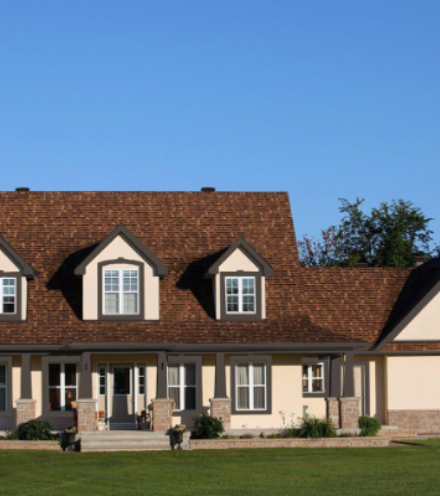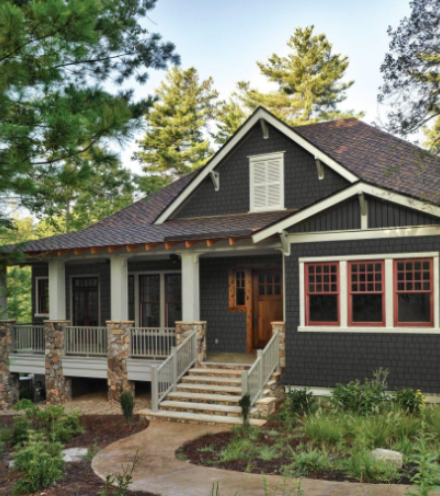Anyone that lives in a cold or Northern climate knows that homes have special needs to get through the winter season in tact. It’s not just about staying warm in the winter, it’s also about mitigating and minimizing any damage that your home may sustain when the temperature drops.
There are many house siding materials on the market, including wood, aluminum, and vinyl. But these materials don’t always work the best in cold climates where a freeze/thaw cycle can create damage, and the siding needs to work harder to help protect the home.
Fiber cement siding holds up well to homes located in any climate, including those in the north, and it can help solve many of the harshest winter’s problems.
Siding Problems in Cold Climates
The first concern of many homeowners in colder weather is keeping the house warm. From that standpoint, wood is often considered as the first choice for siding. It insulates better than either aluminum or vinyl, neither of which provide any protection against the cold.
But wood has other issues that can arise during a cold snap. Because the material is porous, any moisture that seeps into the wood becomes subject to the freeze/thaw cycle, where any trapped moisture will freeze and expand, causing damage to the siding that may turn to rot in the spring. This is one reason why wood siding must be scraped and painted so frequently; it needs that layer of protection against moisture. Without it, a harsh winter can do a lot of damage.
Vinyl siding has further problems in the cold. Because vinyl is a type of plastic, it can become brittle in the extreme cold. If this happens, the material is now more likely to crack or break, particularly if it experiences a hard knock, such as a falling tree limb during a storm.
Aluminum has similar issues. Although it won’t crack, it can dent easily, and the color can fade quickly, leaving a powdery residue behind on the exterior of your home.
And no matter what type of siding you choose, it needs to help protect your home from not only moisture and the freeze/thaw cycle, it also needs to help provide the tight building envelope necessary to keeping heating bills from rising out of control. Not all sidings are paired easily within insulation, and in many cases they’re simply installed directly over the vapor barrier, providing no protection from cold air seeping in.
Fiber Cement in Cold Climates
Fiber cement siding easily solves the issues that other siding types face in cold climates. It’s been installed and tested in some of the harshest winter climates, and has succeeded year after year, proving its use and worth in cold climate installations.
Fiber cement siding will not absorb moisture the way that wood will.
It is also not as brittle as vinyl, so even in extreme cold temperatures, it will not crack or split. This means that it won’t have the same amount of spring clean up and maintenance, even after a major storm or during an extreme cold spell.
Fiber cement is easily paired with insulation to help protect your home from the cold and keep your energy bills low. Many insulation manufacturers design foam insulation specifically for use with fiber cement siding. This helps prevent air gaps between the siding and the insulation and helps installation go more smoothly for a better fit and a more comfortable home.
Versatility
In addition to performing well in cold climates, fiber cement siding is also extremely versatile in style and appearance. It’s available in a wide range of colors as well as siding styles. This includes many styles that are popular in the north, such as cedar-look shingles.
Fiber cement siding is also available in a range of colors that complement many architectural styles. This includes not only many popular neutral shades, but also several bolder colors as well.
The available colors paired with the different types of siding and architectural panels mean that no matter what style of home you have, and no matter what type of climate you live in, there is a fiber cement product that can help.
Consider Fiber Cement for Cold Climates
Fiber cement siding can withstand the coldest, harshest winters without issue. You won’t find yourself scraping or replacing siding in the spring, just enjoying your durable, low maintenance siding year round. Consider fiber cement siding for your northern home to weather the worst that winter storms can bring.




